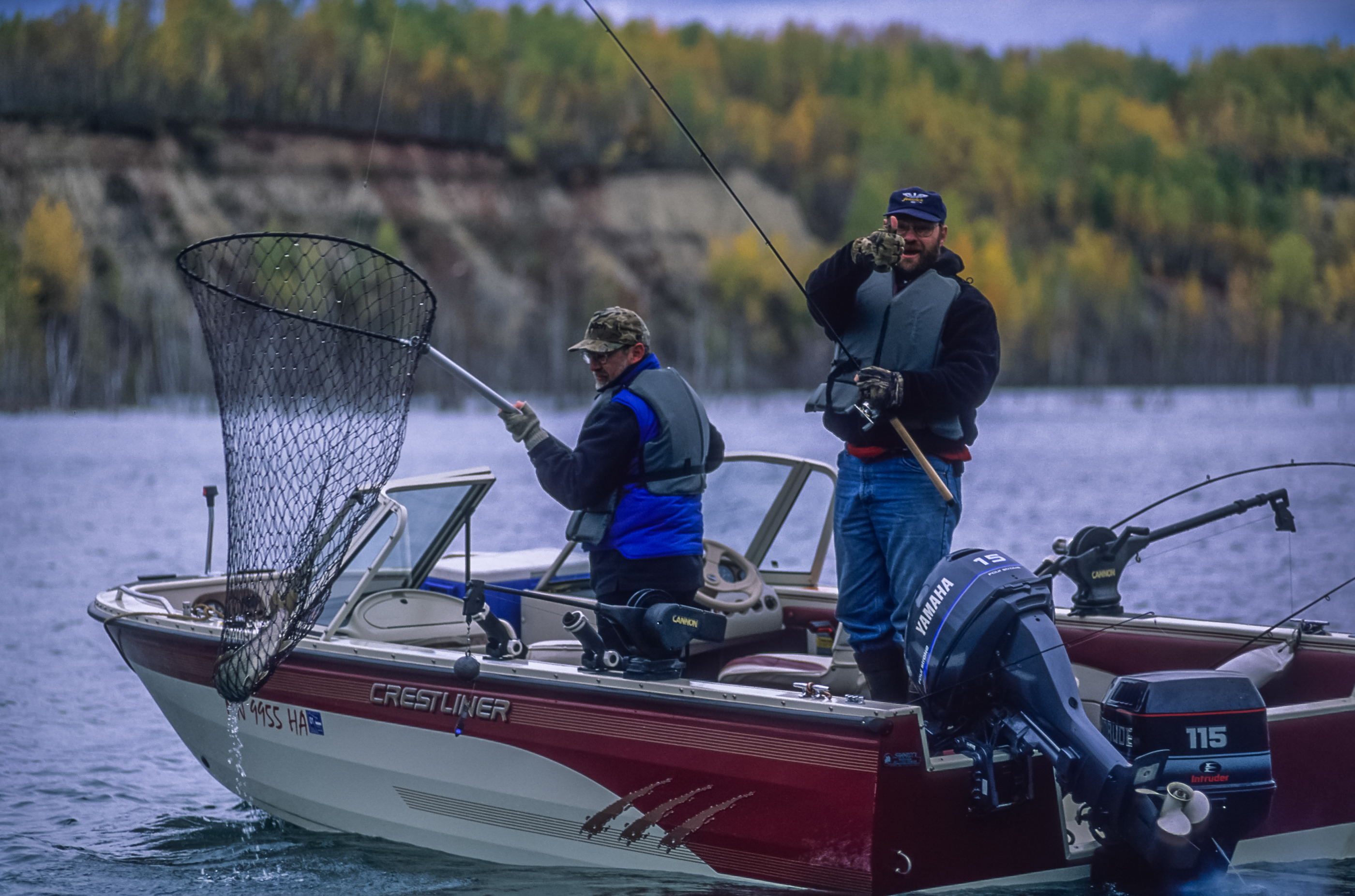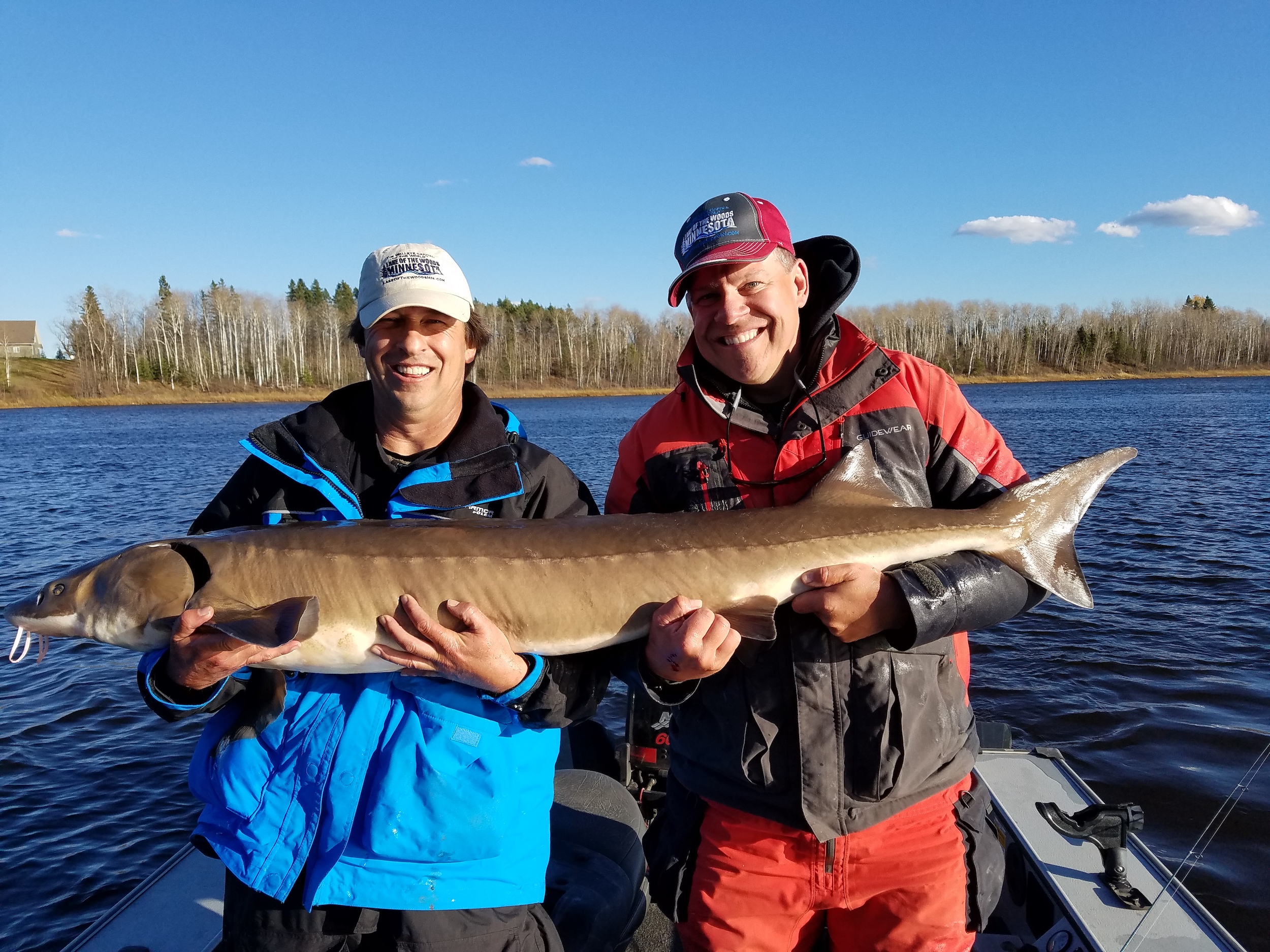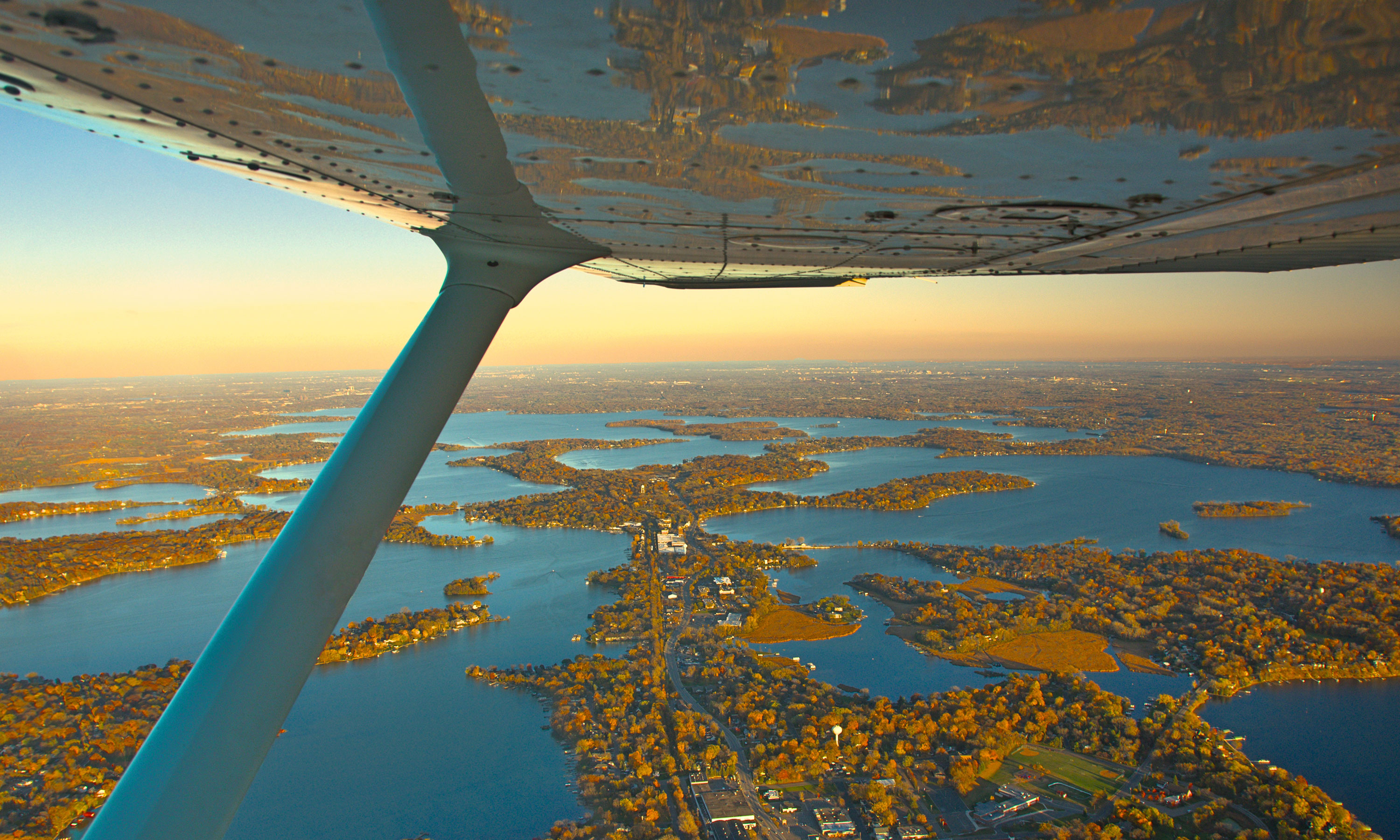
How to Catch a Trophy-Sized Fish in Minnesota This Fall
How to Catch a Trophy-Sized Fish in Minnesota This Fall
By Joe Albert
Whether anglers want to pursue bass, muskies, northern pike or walleyes in one of the state’s thousands of fishable waters, or monster catfish in the flowing waters of a river, the opportunity for the average fisherman to catch a lunker is never better than at the start of autumn.

Fishing for trout in stocked pit lakes on the Iron Range
How & Where to Catch a Lunker This Fall
Anglers who want to bag a trophy in the fall should tie on large lures or use big bait. One reason is that natural forage has been growing all summer, so predatory fish are used to seeing large forage. Another is that fish want to eat a big meal without expending a lot of energy.
Following are some lakes and rivers around the state where fishermen can expect some fantastic fishing in the fall.
Northeast Minnesota
Near Tower, 39,300-acre Lake Vermilion provides some of northeastern Minnesota's best fishing for a wide variety of species, including bass, crappies, muskies and walleyes. Just west of Grand Rapids, Lake Winnibigoshish and its 56,500 acres of water produce excellent fishing for jumbo perch in the fall. Anglers who want a shot at a trophy walleye should troll shallow-running crankbaits in the shallows after dark.

A couple fishermen show off a big ol' sturgeon / Lake of the Woods Tourism
Northwest Minnesota
At more than 764,000 acres, Lake of the Woods along the Canadian border is a massive northwest Minnesota body of water. It’s also a great bet for anglers who want to catch northern pike that measure 40 inches or longer. Look for such fish in the lake’s bays around rocks and thinning beds of vegetation.
When it comes to big walleyes in the fall, the Rainy River is a great place to catch them. Those fish leave Lake of the Woods and move into the Rainy River to feed on minnows, Drewes said. “Those walleyes really do go on a strong feeding binge in the fall,” he said.
Central Minnesota
During the 2016 Toyota Bassmaster Angler of the Year Championship, many of the world’s top bass fishermen deemed 128,000-acre Lake Mille Lacs as the world’s best for bass, with Bassmaster officially declaring it No. 1 in its 2017 rankings. The winner of that tournament, Minnesota’s own Seth Feider—who caught 15 smallmouth bass that averaged more than 5 pounds apiece—says fall is the best time to catch the biggest of the lake’s smallmouth bass.
Mille Lacs also is among the state’s premier destinations for fall muskie fishing, and in recent years fall anglers have boated muskies that weighed more than 50 pounds. Just north of Alexandria, 5,700-acre Lake Miltona also boasts excellent muskie and walleye fishing in the fall.

The many smaller lakes and bays that comprise Lake Minnetonka as seen from above / Nasser Pooladian
Minneapolis-St. Paul Area
Oddly enough, some of the state’s most overlooked opportunities to catch a trophy fish occur in the Twin Cities metro area. In places such as the Minnesota and Mississippi rivers, anglers routinely catch giant channel and flathead catfish in the fall around log jams and holes. Doing so doesn’t require a boat, either.
The 14,200-acre Lake Minnetonka is a good fall option, too, especially for anglers who want to tie into big largemouth bass, which can be caught around thinning vegetation and underneath the lake’s numerous boat docks.
Southern Minnesota
The driftless area of southeast Minnesota is home to dozens of trout streams and creeks where fishermen can catch brook, brown and rainbow trout. The colorful fish spawn in the fall and are especially active. On the other side of the region, 12,000-acre Big Stone Lake near Ortonville is a fine option for fall anglers who want good multi-species fishing. The lake is especially well known for its excellent yellow perch and walleye fishing in the fall.


